Author: Alfredo Portone
On 14th-15th May, the Energy Group (EG) of the European Physical Society
met in Cadarache (France) for its annual meeting that, this year, was
celebrated at the Cadarache Château just next to the chantier of the largest nuclear fusion experiment under construction: the International Thermonuclear Experimental Reactor (ITER).
On 14th May, 19 EPS members gathered at the Cadarache Château to visit the ITER site
located nearby. After a brief lunch at the ITER canteen the group was
briefed by three members of the ITER Staff about the project,
its key features, and the visit highlights.
The group first
visited the Assembly Hall where the main reactor components are
pre-assembled prior to their transport inside the neighbouring tokamak
pit for final assembly. The assembly hall is just overwhelming for its
dimensions and amount of high-tech equipment it contains. Two
superconducting Toroidal Field coils were located on the pre-assembly
station together with one of the nine 40-deg vacuum vessel sector.
Similarly, in the Central Solenoid area of the hall, 2 modules of the CS
coils stack were also being assembled.
Then the group moved to
the tokamak pit where the final tokamak will be located and where the
actual fusion experiments will take place. The pit is less impressive
but far more important for the final function it will play. This is a
higher quality clear area that will be soon very crowded by hosting an
increasingly large number of components that will be finally assembled
inside it. At present only the 2 lowermost Poloidal Field (PF) coils
(PF5 and PF6) are installed down inside the pit.
Following the
visit, at 5 PM the group returned to the Château where the workshop
started to focus on four main themes: (a) critical issues associated to
the present EU de-carbonization plans ( “energy trilemma”), (b)
developments in the field of energy production and optimization
(fission, fusion, energy storage, etc.), (c) impact of global warming on
society, for example in terms of natural disasters and (d) contribution
of EPS to the discussion on energy matters within the EU institutions.
Regarding
this last point, the presence of Prof. Mairi Sakellariadou (new EPS
President) was particularly appreciated. Indeed, Mairi presented her
views on the priorities and goals that the EPS-EG should be focussing on
in such dialogue with the EU Institutions. She also showed a strong
interest in following up regularly our group activities.
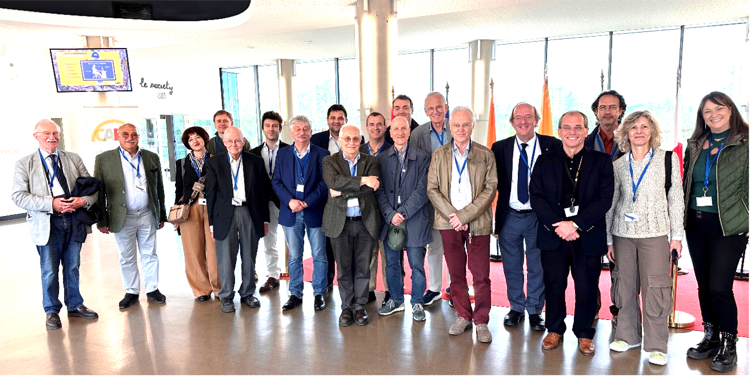
The group of participants at the ITER HQ ready to visit the ITER construction platform.
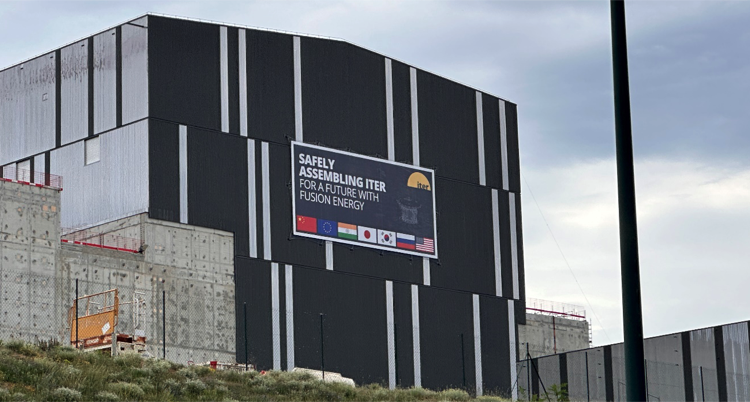
The ITER tokamak building
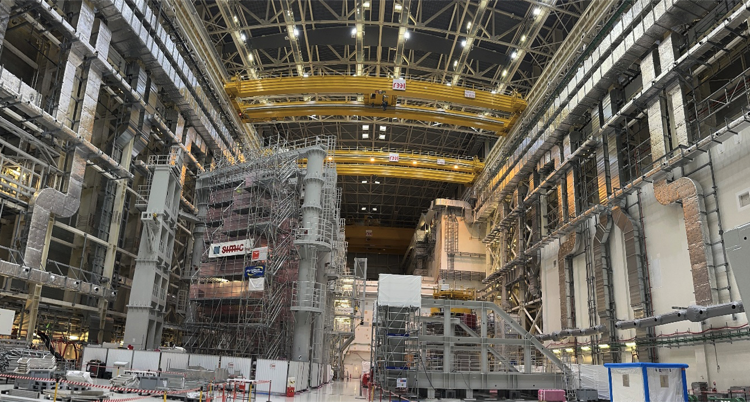
The ITER Assembly Hall
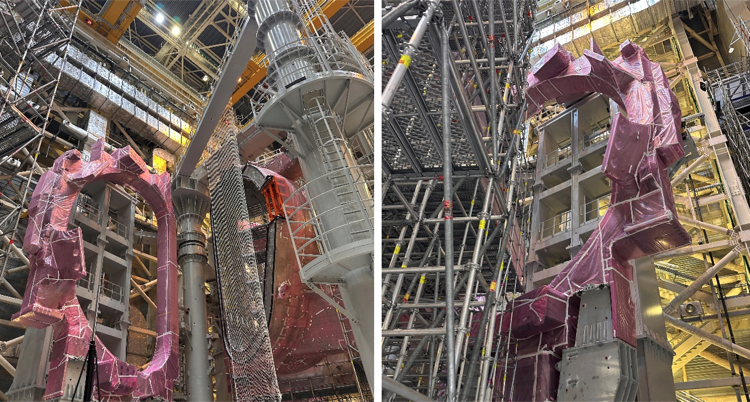
The ITER Assembly Hall: the TF-vessel assembly area (left) and CS assembly area (right).
Inside the ITER Assembly Hall: 2 (wrapped) TF coil is being mounted on the vacuum vessel sector.
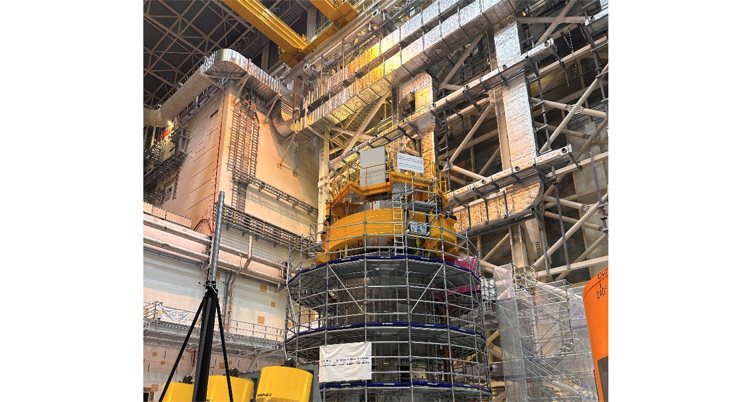
Inside the ITER Assembly Hall: the Central Solenoid coils modules being stacked together.
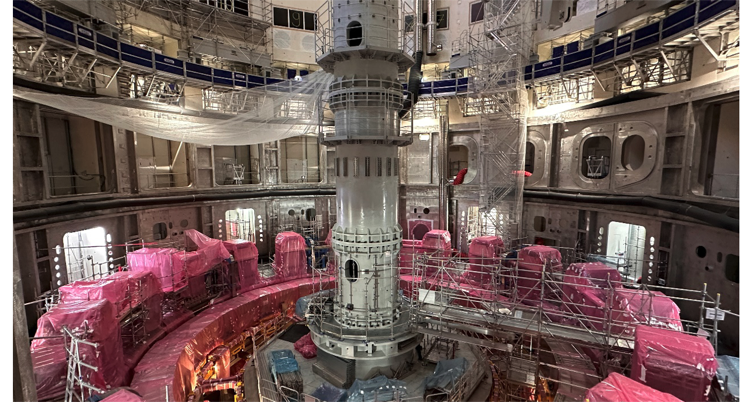
Inside the ITER Tokamak Pit: 18 TF coils gravity supports surround the PF6 coil (all wrapped).
The grey central post will be later replaced by the stack of 6 superconducting coils modules (Central Solenoid).
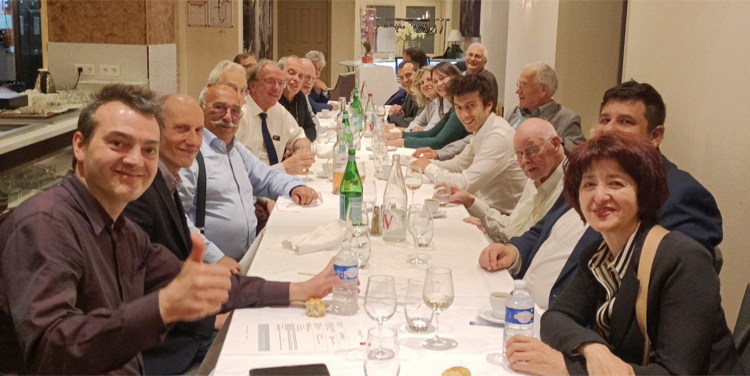
Dinner at the Cadarache Château